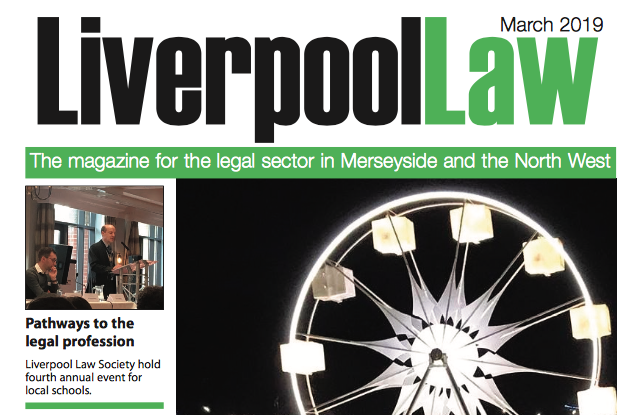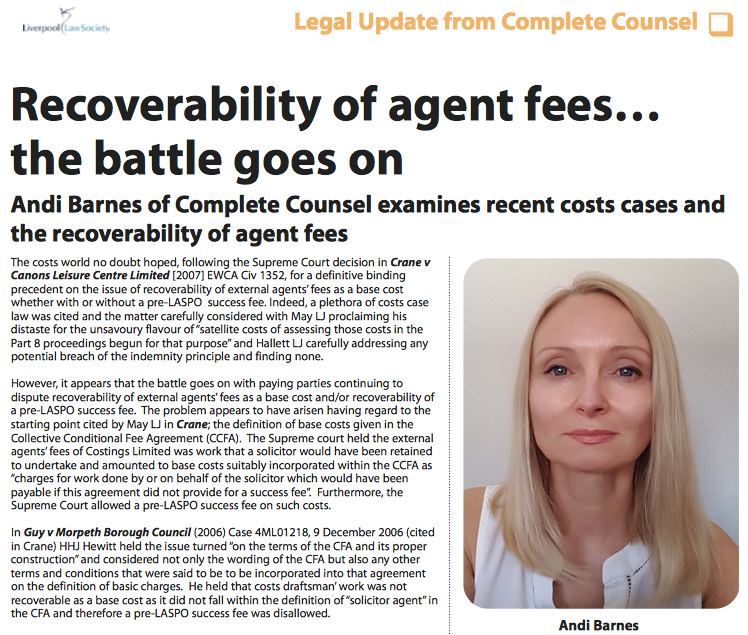Are standards maintained because at least in part, a threat of litigation, and are lessons learnt (as claimed) from litigated cases?
Patient safety is described by the World Health Organisation (WHO) as ‘the most important common issue in health care internationally’. It includes the prevention of errors and adverse effects to patients associated with health care. Currently, 1 in every 10 patients in Europe experience preventable harm or adverse events in hospital.
WHO statistics show that strategies to reduce the rate of adverse events in the European Union alone would lead to the prevention of more than 750,000 harm-inflicting medical errors per year, leading in turn to over 3.2 million fewer days of hospitalisation, 260,000 fewer incidents of permanent disability, and 95,000 fewer deaths per year.
The WHO/Europe 2008 Tallinn Charter: Health Systems for Health and Wealth, combined with the contents of Health 2020, provides guidance for the strengthening of people centred health systems for coordinated/ integrated health services. National health authorities are encouraged to consider policies that can support safer care and engage patients, families and health care staff working together to improve patient safety.
NHS England has identified that ‘Patient safety improvement is about tackling the causes of errors in care that can come from bad working environments or the lack of training and support for staff’, with ‘The Care Quality Commission’ (CQC) policing such, in the hospital environment.
In relation to its stance on patient safety, the NHS stipulates that,
‘Every patient in the NHS should expect the people and organisations caring for them to make their safety the first priority. They should expect to be treated in a clean environment, with a minimal risk of infection. The equipment used should be in good working order and used in the correct way.
Medicines should be given on time and in the correct doses. Treatments should be appropriate for their condition, with procedures performed correctly and in a timely and effective way.
Patients who are being cared for in hospitals, in their own home, or in nursing or care homes should receive care that minimises the risk of any further harm.
Care should be delivered in a co-ordinated way by competent professionals who work in an effective team. This includes communicating patients’ needs effectively.’
Included within the Simon Stevens’ 5 year programme vision for the NHS, there is an emphasis on a radical upgrade in prevention and public health, as well as providing patients with a far greater control of their own care.
This has been reflected already within the courts, with the decision seen by The Supreme Court in Montgomery v Lanarkshire Health, whereby the parameters in relation to the issue of medical consent are now to include ‘any material risk’ to be disclosed by the doctor to the patient, prior to any treatment being administered. An ‘informed, intelligent patient’ being mostly, the duty of the treating doctor.
Whether clinical negligence litigation does have a role to play in patient safety, is not currently reflected by a decrease in number of claims or annual expenditure on such.
The NHS Litigation Authority Report and Accounts 2014/15 reports a 26% increase in the number of NHS claims over the last 9 years, with the proportion of NHS activity reported to the National Reporting and Learning System as an incident resulting in harm (moderate, severe or fatal), also increasing. The total clinical negligence expenditure including interim payments in 2014/15 was £1,169,586,958 compared with £1,192,538,084 in 2013/14. 11,497 new clinical negligence claims were received in 2014/15, an average of 958 new clinical claims every month, with a steady increase over the last 3 years.
The report goes on to highlight,
‘Whilst annual expenditure on clinical negligence claims saw a small reduction from 2013/14 to 2014/15, this does not account for future income streams agreed on high value claims resolved on a periodical payment basis within the year. In addition, the financial impact of the high number of claims received during 2013/14 is likely to be seen in 2015/16 and beyond, when those claims fall for settlement.
For the year 2014/15 orthopaedic surgery accounted for 14% of clinical negligence claims, with 12% relating to A&E, 11% general surgery, 10% obstetrics, 6% gynaecology, 5% general medicine, 3% radiology, 3% urology, 2% gastroenterology, 2% paediatrics and 32% aggregated specialities……
Our aim is to support the NHS to learn from things that go wrong, to help reduce harm, improve patient safety and prevent claims from happening in the future.’
At the end of last year, The Health Foundation published the report ‘Continuous improvement of patient safety, The case for change in the NHS’ by John Ilingworth. One observation of Illingworth stated,
‘The factors are systemic, cultural, contextual and human in nature, and elements of all of them were also identified in the inquiries into failings of care at Mid Staffordshire NHS Foundation Trust and, most recently, Morecambe Bay, some 46 years after the Ely Hospital Inquiry. While such factors are complex, multifaceted and difficult to eradicate, their persistence across the decades is cause for serious concern.’
Going on to conclude, Ilingworth states,
‘Given the tendency to focus on measuring individual aspects of harm in the NHS, rather than system measures of safety, it is inevitable that an answer to the question of whether the NHS is getting safer remains “curiously elusive”.’
The report ‘Patient Engagement in Patient Safety: A Framework for the NHS was published in response and provides guidance for patient inclusion, at every level.
Over the last decade, as the increase in litigation cases and expenditure on such have increased, so too, has the pressure on the treating doctor’s susceptibility to be litigated against. This has created the sometimes advantageous, and the sometimes not-so advantageous situation of ‘defensive medicine’, for the patient and doctor alike.
Ortashi reported in the article ‘The practice of defensive medicine among hospital doctors in the United Kingdom’
‘More than three quarters (78%) of doctors reported practicing one form or another of defensive medicine, and although this seems to be a high prevalence rate, in fact this is well below the prevalence of defensive medicine reported in United states of America (USA) and Japan where the prevalence of defensive medicine practice is reported to be above 90%’ ……
‘Though one in three consultants have a direct experience with litigation, however consultants are practicing less defensive medicine. We think this is expected finding, as consultants are taking the ultimate responsibility in the NHS, most of the claims are not successful so most of the consultants are used to deal with these claims on frequent base.
Over half of the sampled doctors in this study (59%) practice defensive medicine in the form of ordering un-necessary tests. Interestingly this is exactly the same percentage that Nicholas Summerton found in 1995 among general practitioners in the UK where 59% said they would request diagnostic tests to avoid complaints and litigation.
Conclusion
Defensive medicine practice is common among hospital doctors who responded to our survey. Ordering un-necessary tests is the commonest form of the defensive medicine identified in this study. Senior grade is significantly associated with less practice of defensive medicine. Further research is needed on the cost of defensive medicine on the NHS.’
In the article ‘Does defensive medicine protect doctors against malpractice claims’ published in the British Medical Journal last November, the authors concluded,
‘Defensive medicine refers to medical care performed primarily to reduce the risk of litigation. Positive defensive medicine occurs when doctors perform more tests or procedures than are necessary. Negative defensive medicine occurs when doctors avoid high risk procedures or refuse to care for high risk patients…… It’s too early to say, although there seems to be a link between higher healthcare spending and lower risk.’
The same conclusion was reached in a 2015 study from the University of Southern California, Harvard Medical School and Stanford University, whereby, it was found that, ‘higher-spending physicians across all specialties face fewer malpractice claims.’ The same study reported, ‘an average physician with a 40-year career will spend 4.25 years with an unresolved, open malpractice claim’.
The personal toll on the physician has been discussed in 2013 in the article ‘Defensive Medicine: A Bane to Healthcare’,
‘the personal finances or professional status of most physicians is not affected by a lawsuit as they have malpractice insurance. This notwithstanding, some physicians show symptoms of anxiety, depression, behaviour or personality changes due to reputational consequences that might undermine their professional career and respect.’
The article goes on to conclude that,
‘practicing defensive medicine is not good for patients or physicians. The adverse effects of defensive medicine are not limited to the increased cost of healthcare, but also affect the overall quality of the healthcare system’.
| In an attempt to avoid the limitations posed by defensive medicine, ‘The Medical Innovation Bill’, now renamed ‘Access to Medical Treatments (Innovation) Bill’ is scheduled to be reintroduced to the House of Commons on the 6th December later this year. This Bill sets out the instances where a doctor is not negligent in departing from the existing range of accepted medical treatments provided they act responsibly. The doctor then has to show that they have considered a number of factors (risks, likely success rates, patient and peer views) and followed a process which is transparent, accountable, and allows full scope for considering all relevant matters. Thus widening the parameters of the standard Bolam test. |
|
The following 8 reasons are stated to be why hospital negligence claims are on the rise in the UK:
- Waiting Lists and Medieval Doctor Referrals
- Overcrowding and Lack of Doctors
- Glitches in Computers
- Communication from Patient to Doctors
- Jobs That Are Rushed
- An Influx in Private Clinics
- Overcrowding and Immigration Issues in Hospital Negligence
- No Win No Fee Claims
To conclude, for purposes of my article, the expenditure paid out by the NHS in clinical litigation is clearly way too excessive to support a continued healthcare system operating in this way.
Although, best practice guidelines and best patient care management can be of assistance with improving patient safety, it remains on the medical individuals for implementation and ultimately carrying out the actual reality of making best practice happen.
However, it stands to reason that best practice guidelines can be extremely useful to the patient and care provider alike, and especially so, with the 8000 rare diseases currently identified.
The introduction of the ‘Access to Medical Treatments (Innovation) Bill’ most certainly has a very important role to play in the improvement of patient safety and reduction of clinical litigation. Let us hope that the newly formed government share the same view.
SOURCES:
http://www.euro.who.int/en/health-topics/Health-systems/patient-safety/patient-safety
http://www.euro.who.int/en/health-topics/health-policy/health-2020-the-european-policy-for-health-and-well-being/about-health-2020/priority-areas
http://www.nhs.uk/NHSEngland/thenhs/patient-safety/Pages/about-patient-safety.aspx
http://www.nhsla.com/AboutUs/Documents/Business%20plan%202016-17%20-%20Final%2022%20April%202016.pdf
https://www.gov.uk/government/uploads/system/uploads/attachment_data/file/454320/NHS_LA_Annual_Report_and_Accounts_2014-15.pdf
https://www.england.nhs.uk/wp-content/uploads/2014/10/5yfv-web.pdf
Montgomery v Lanarkshire Health Board (Supreme Court, 11/3/2015)
http://www.health.org.uk/sites/default/files/ContinuousImprovementPatientSafety.pdf
https://www.england.nhs.uk/signuptosafety/wp-content/uploads/sites/16/2016/05/pe-ps-framwrk-apr-16.pdf
http://bmcmedethics.biomedcentral.com/articles/10.1186/1472-6939-14-42
http://www.bmj.com/content/351/bmj.h5786
http://medicaleconomics.modernmedicine.com/medical-economics/news/defensive-medicine-versus-value-based-care?page=0,3
http://www.ncbi.nlm.nih.gov/pmc/articles/PMC3728884/
http://medicalinnovationbill.co.uk/
http://www.medicalnegligenceassist.co.uk/hospital-negligence-claims-rise-uk




 Article by
Article by  The reason for this was outlined in Summers v Fairclough Homes Ltd [fusion_builder_container hundred_percent=”yes” overflow=”visible”][fusion_builder_row][fusion_builder_column type=”1_1″ background_position=”left top” background_color=”” border_size=”” border_color=”” border_style=”solid” spacing=”yes” background_image=”” background_repeat=”no-repeat” padding=”” margin_top=”0px” margin_bottom=”0px” class=”” id=”” animation_type=”” animation_speed=”0.3″ animation_direction=”left” hide_on_mobile=”no” center_content=”no” min_height=”none”][2012] 1 WLR 2004 where the Supreme Court commented; first, that such an application should only be granted as a last resort because it was a draconian step that would deprive a claimant of a substantive right to a fair trial; second, if fraud was found then Judges could account for it in their assessment on liability and quantum in the ordinary way; and third, there were other ways to punish and/or deter claimants for making fraudulent claims such as: orders for costs, reduced interest, proceedings for contempt and criminal charges.
The reason for this was outlined in Summers v Fairclough Homes Ltd [fusion_builder_container hundred_percent=”yes” overflow=”visible”][fusion_builder_row][fusion_builder_column type=”1_1″ background_position=”left top” background_color=”” border_size=”” border_color=”” border_style=”solid” spacing=”yes” background_image=”” background_repeat=”no-repeat” padding=”” margin_top=”0px” margin_bottom=”0px” class=”” id=”” animation_type=”” animation_speed=”0.3″ animation_direction=”left” hide_on_mobile=”no” center_content=”no” min_height=”none”][2012] 1 WLR 2004 where the Supreme Court commented; first, that such an application should only be granted as a last resort because it was a draconian step that would deprive a claimant of a substantive right to a fair trial; second, if fraud was found then Judges could account for it in their assessment on liability and quantum in the ordinary way; and third, there were other ways to punish and/or deter claimants for making fraudulent claims such as: orders for costs, reduced interest, proceedings for contempt and criminal charges.
 25/01/18. “Public policy is a very unruly horse, and when once you get astride, you never know where it will carry you.” These oft repeated words were those of Borough J in Richardson v. Mellish in 1824 and are the first reference to the much repeated maxim, that resorting to public policy is equivalent to mounting an unruly horse. The expression has been used in the law of tort in other contexts too, most recently in Lumba v. Secretary of State for the Home Department…”
25/01/18. “Public policy is a very unruly horse, and when once you get astride, you never know where it will carry you.” These oft repeated words were those of Borough J in Richardson v. Mellish in 1824 and are the first reference to the much repeated maxim, that resorting to public policy is equivalent to mounting an unruly horse. The expression has been used in the law of tort in other contexts too, most recently in Lumba v. Secretary of State for the Home Department…”
 The case of Christine Reaney v. University Hospital of North Staffordshire NHS Trust (1) and Mid Staffordshire NHS Foundation Trust (2)
The case of Christine Reaney v. University Hospital of North Staffordshire NHS Trust (1) and Mid Staffordshire NHS Foundation Trust (2)
 In cases where an employee is exposed to asbestos, a claim may be brought under the common law as well as pursuant to duties owed by the employer under various regulations and legislation. One example of such legislation is s.63 (1) Factories Act 1961, which provides that:
In cases where an employee is exposed to asbestos, a claim may be brought under the common law as well as pursuant to duties owed by the employer under various regulations and legislation. One example of such legislation is s.63 (1) Factories Act 1961, which provides that:


